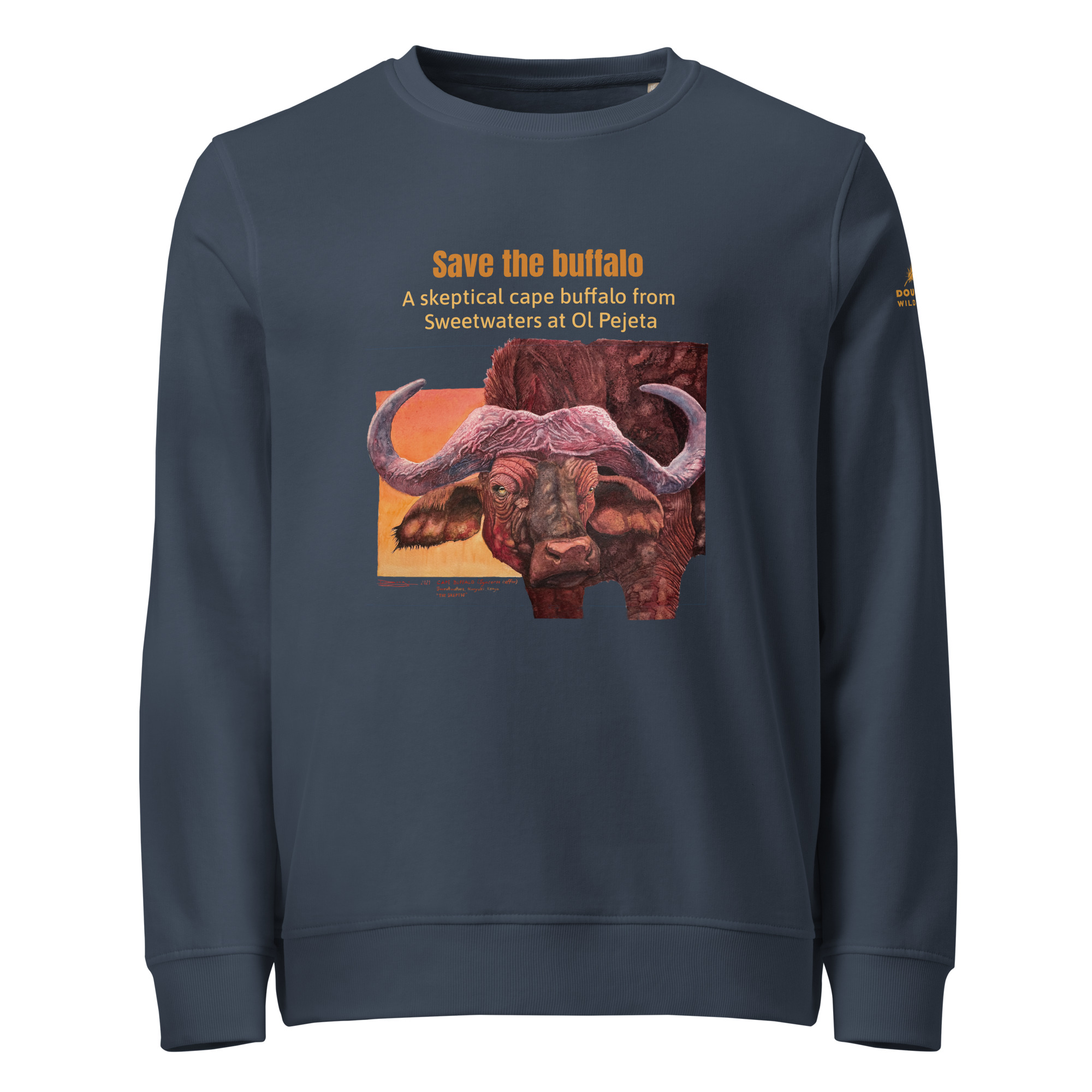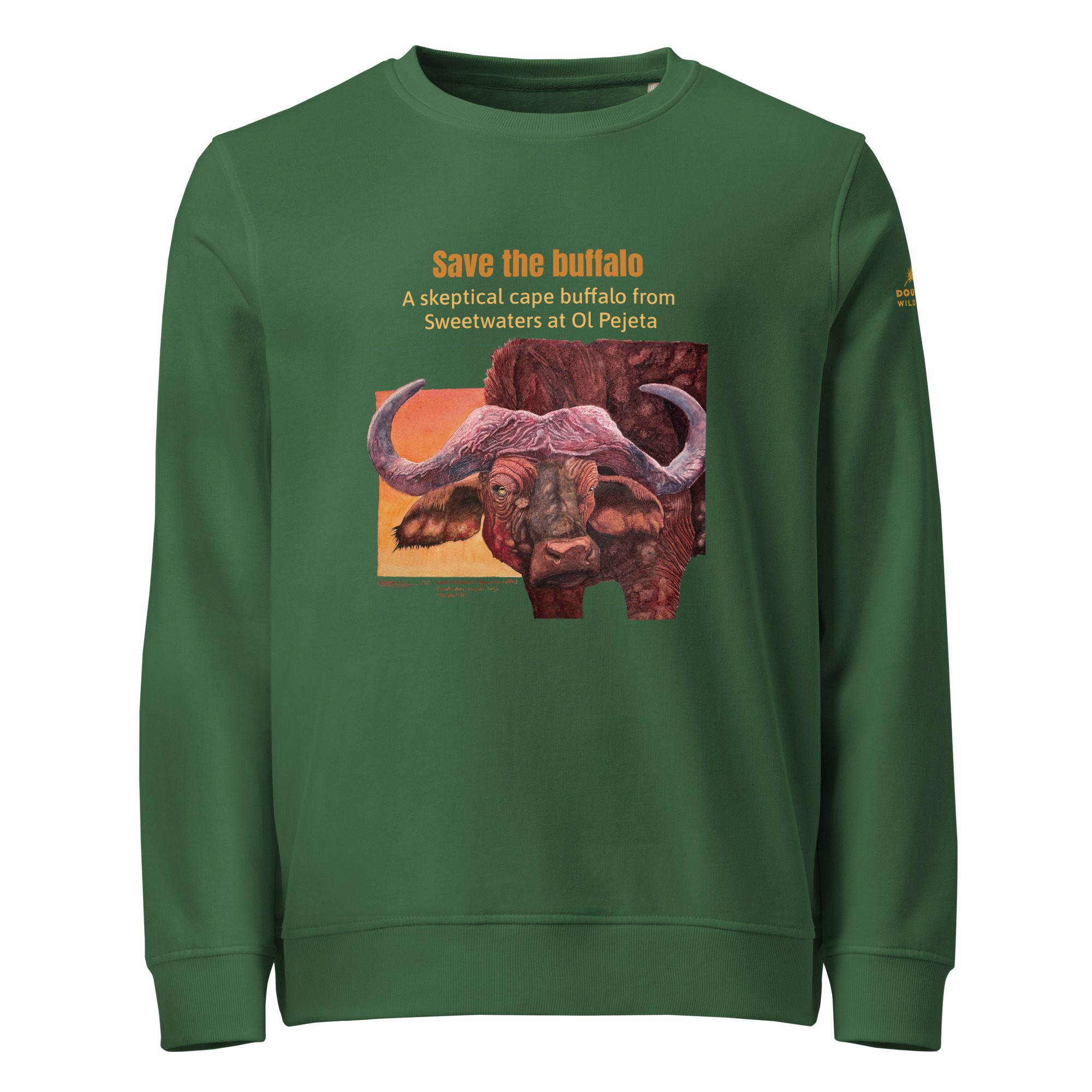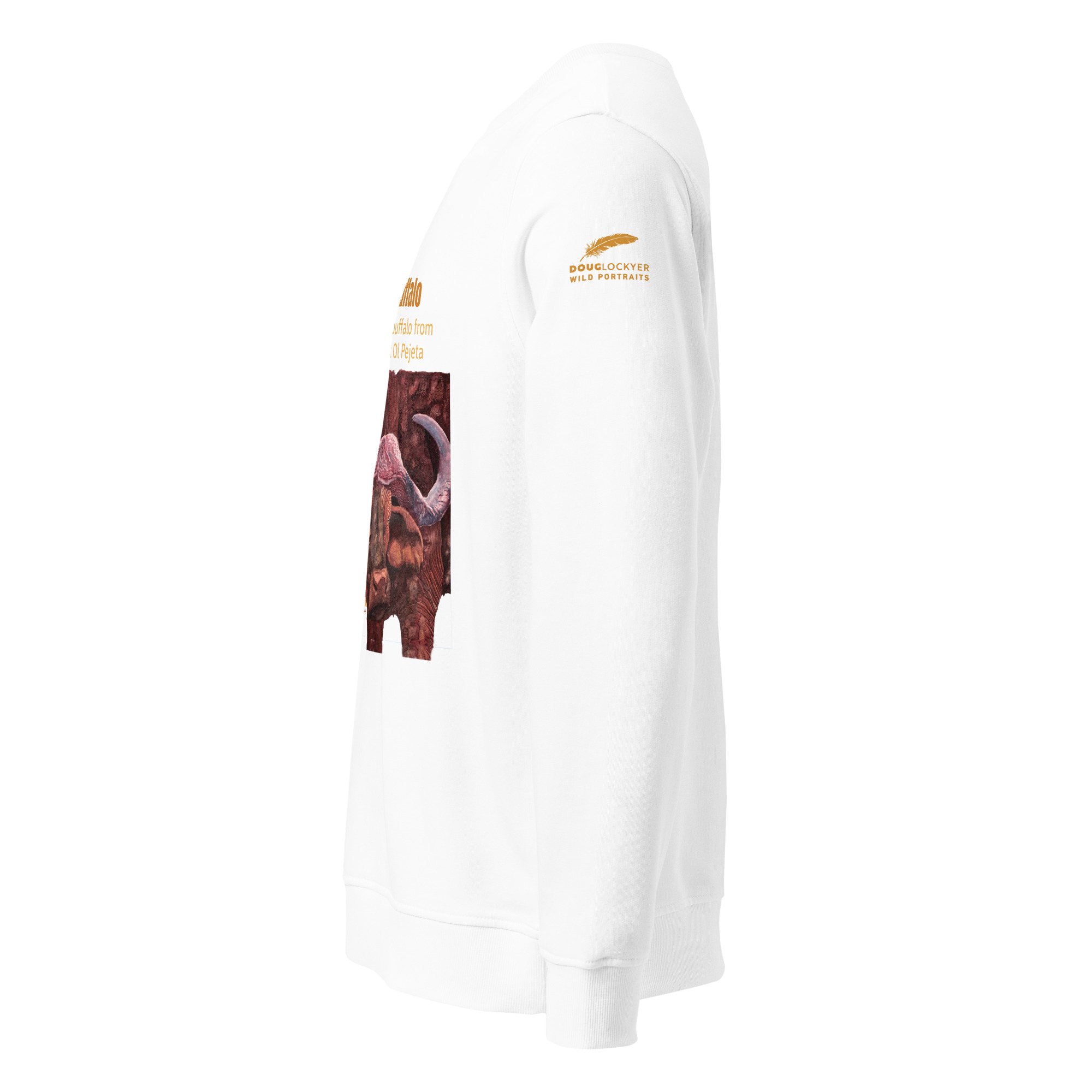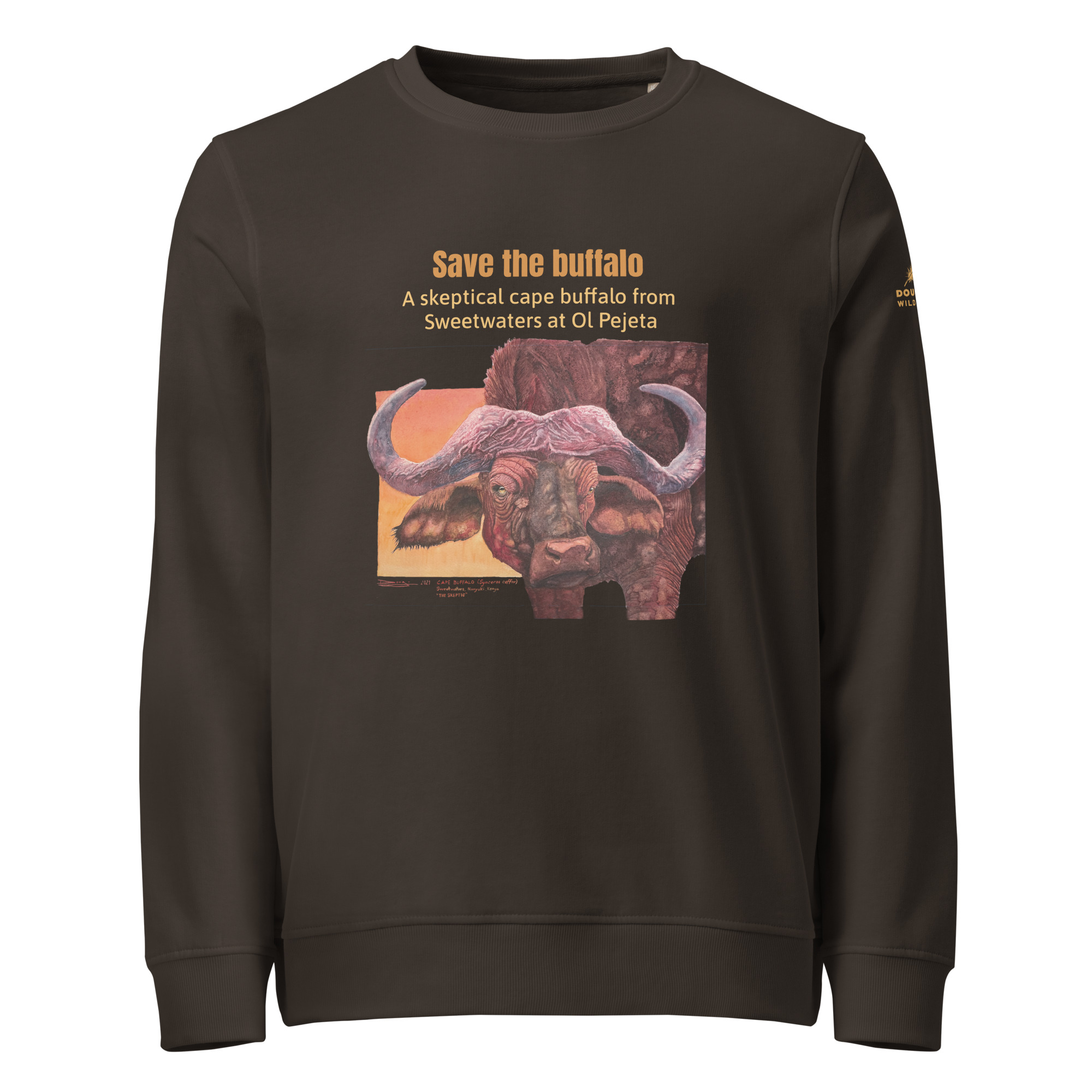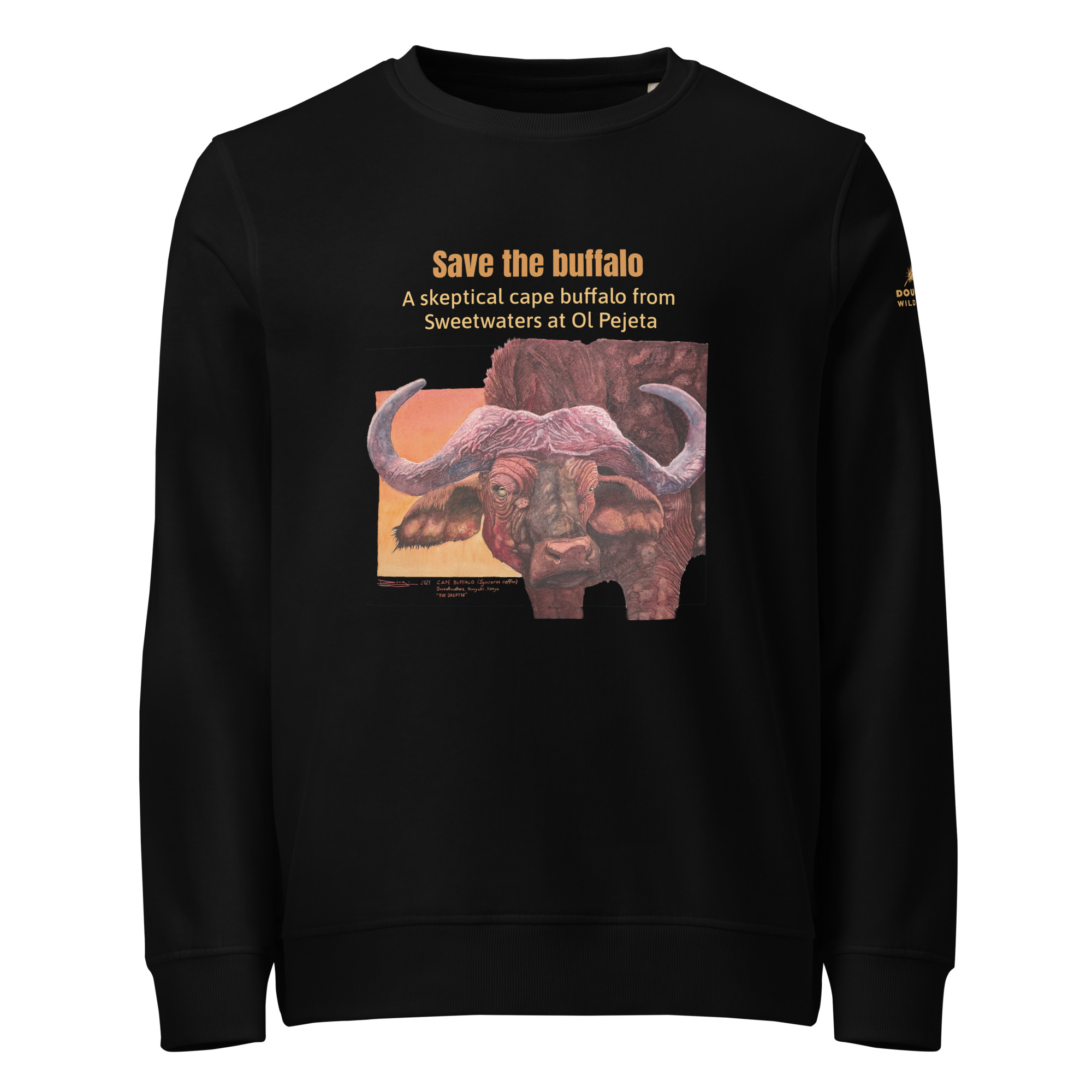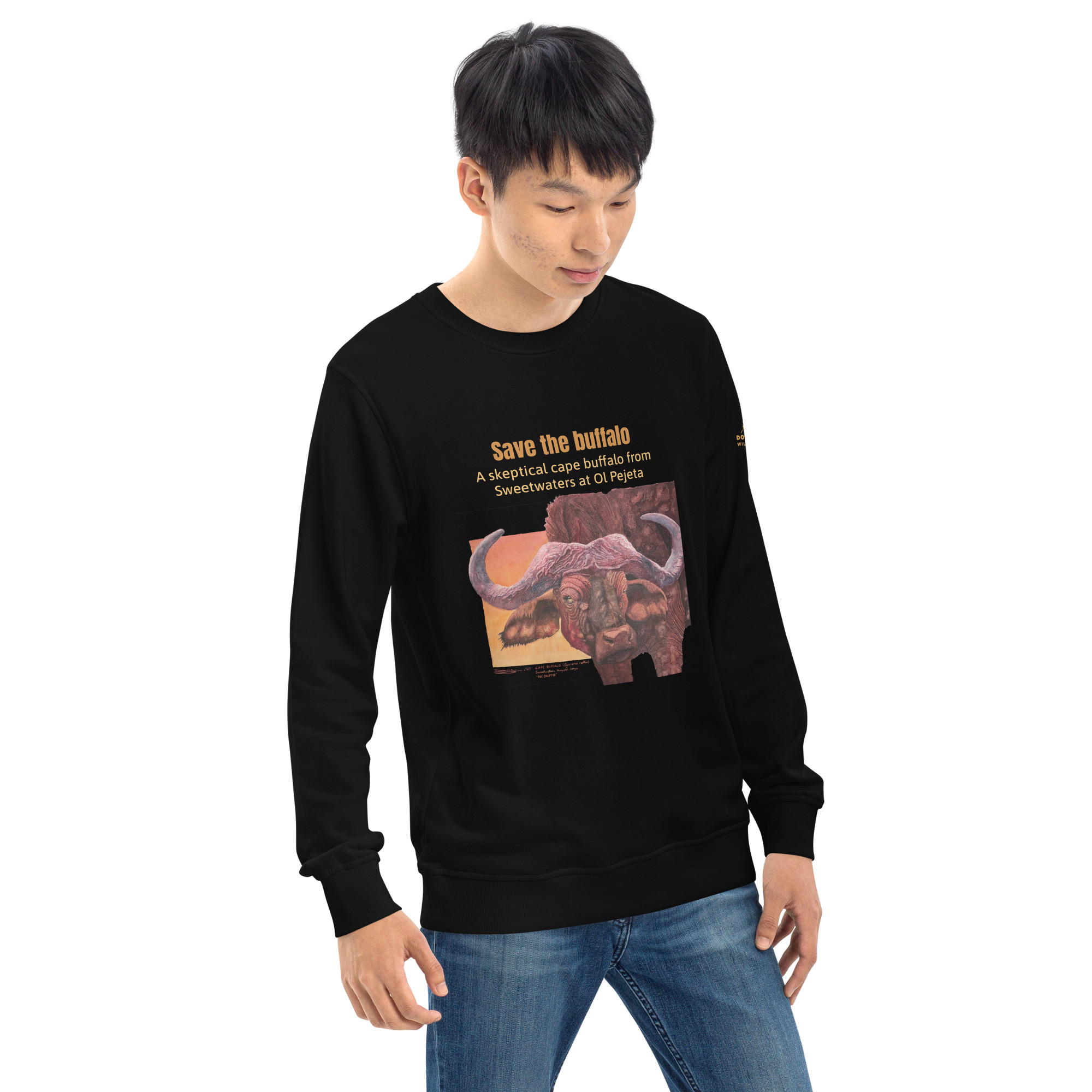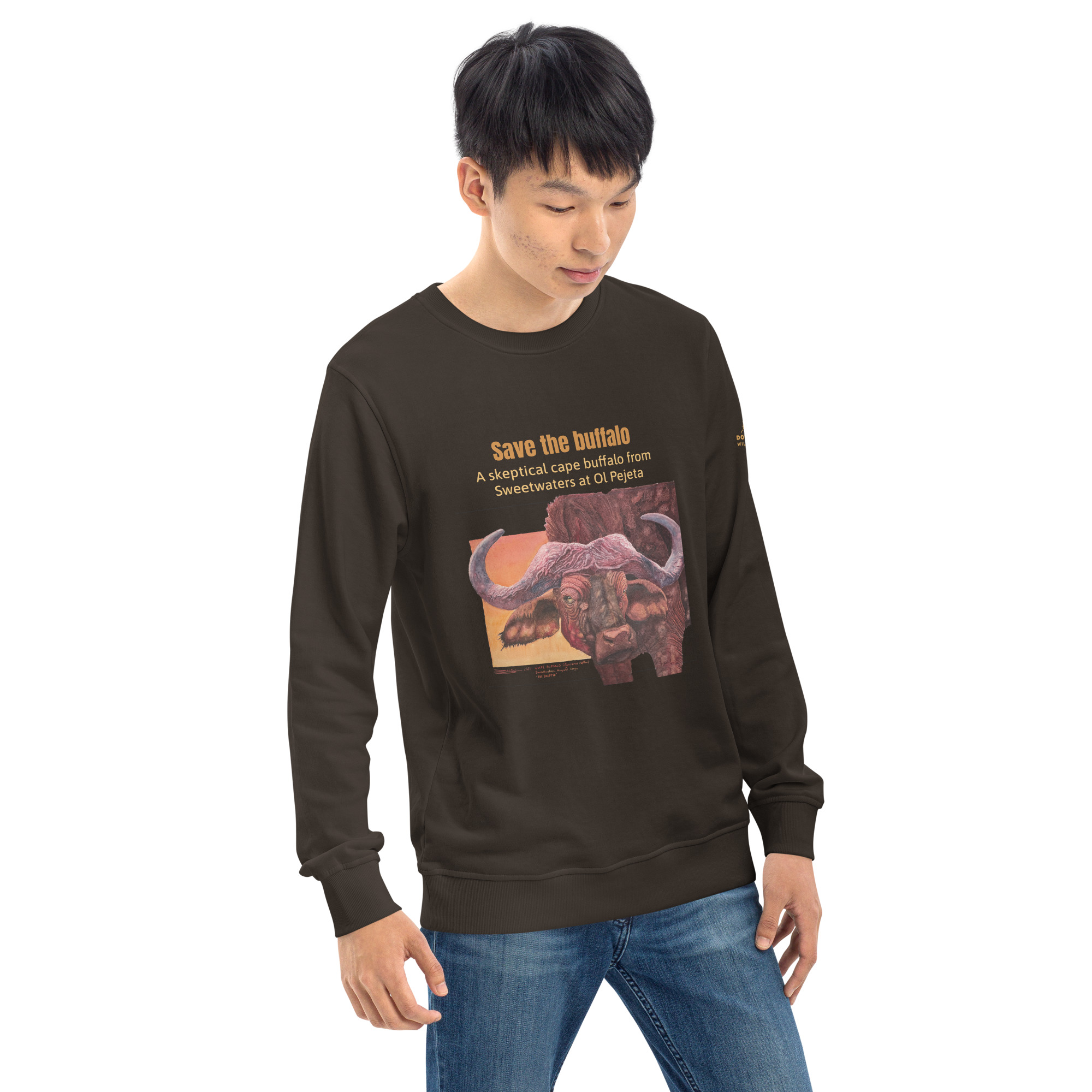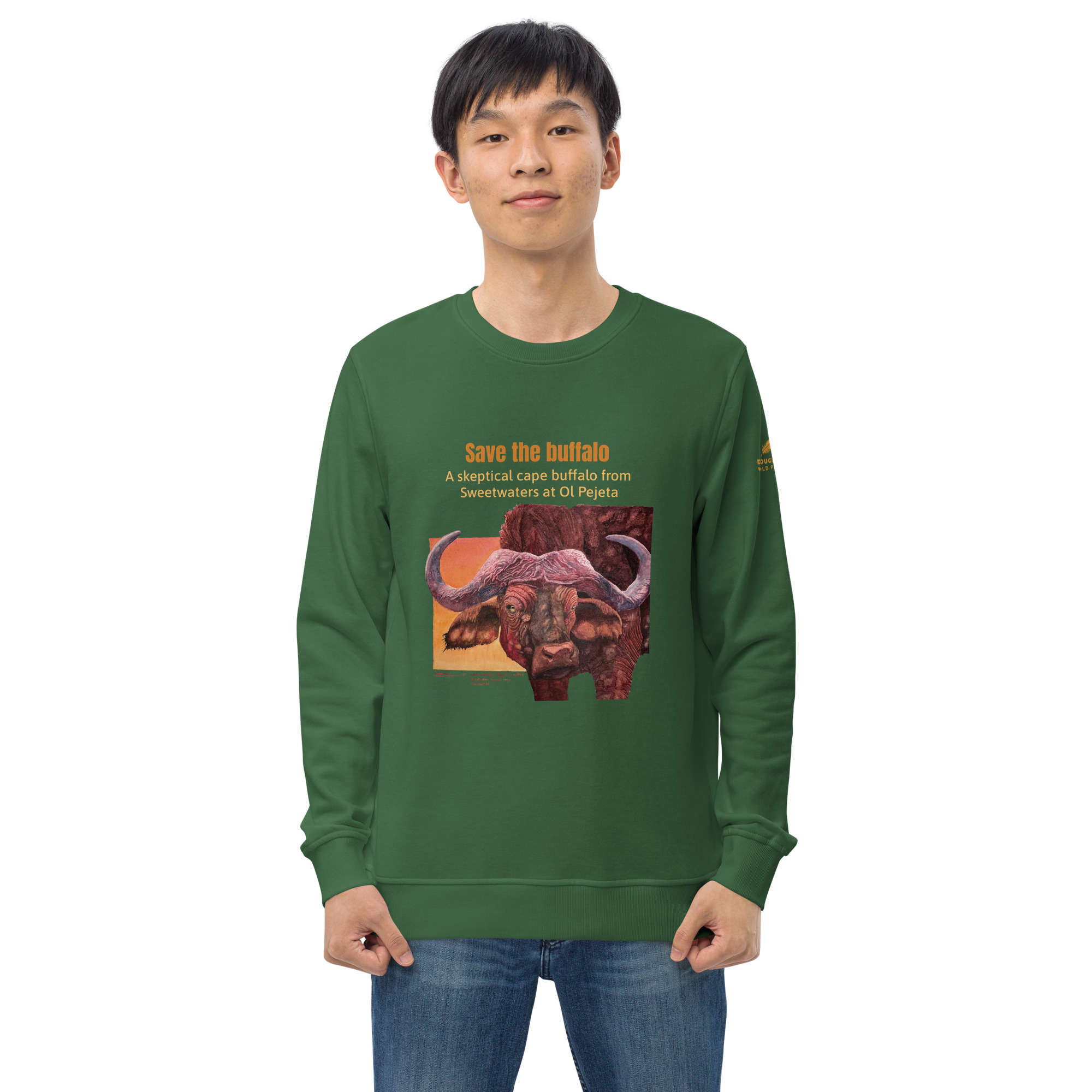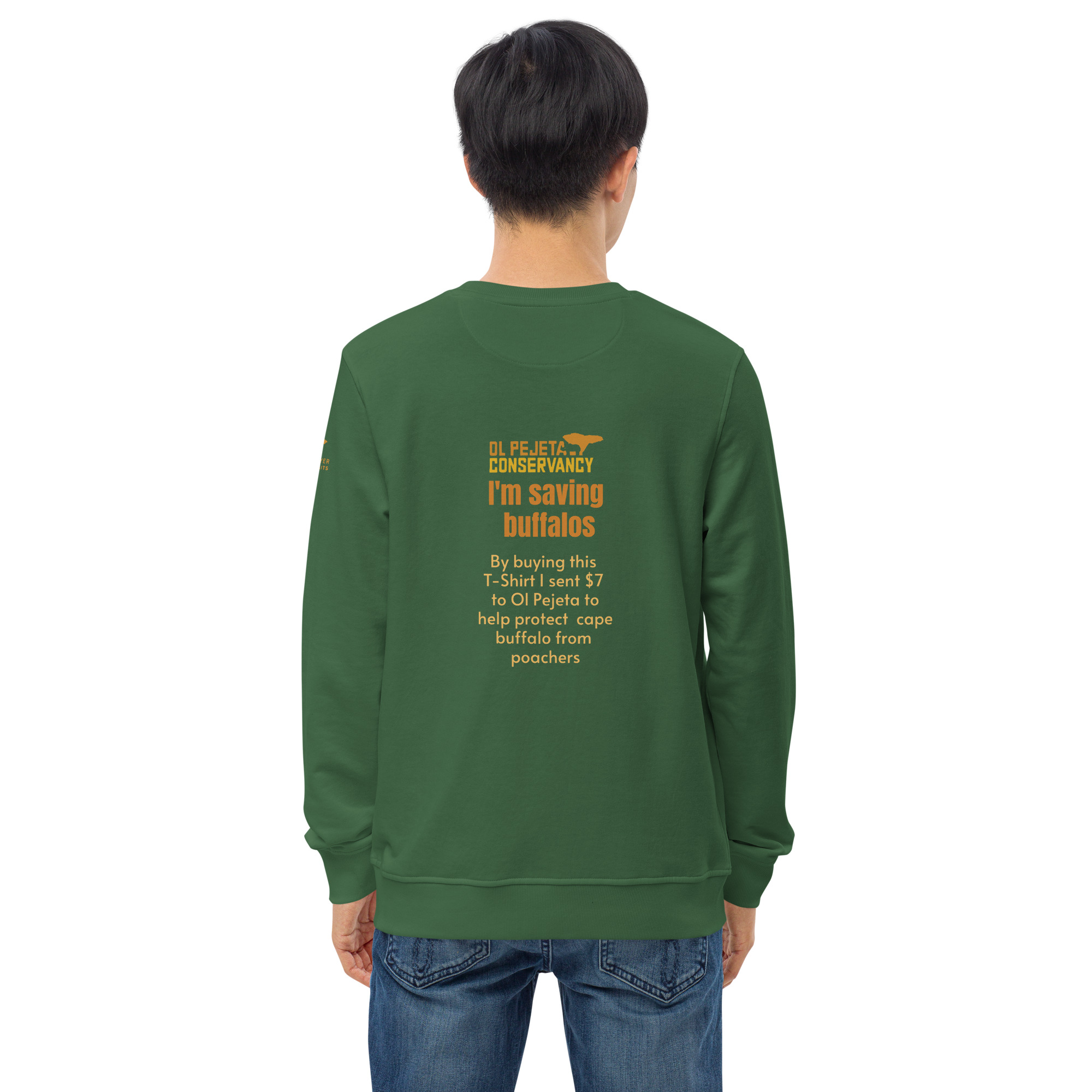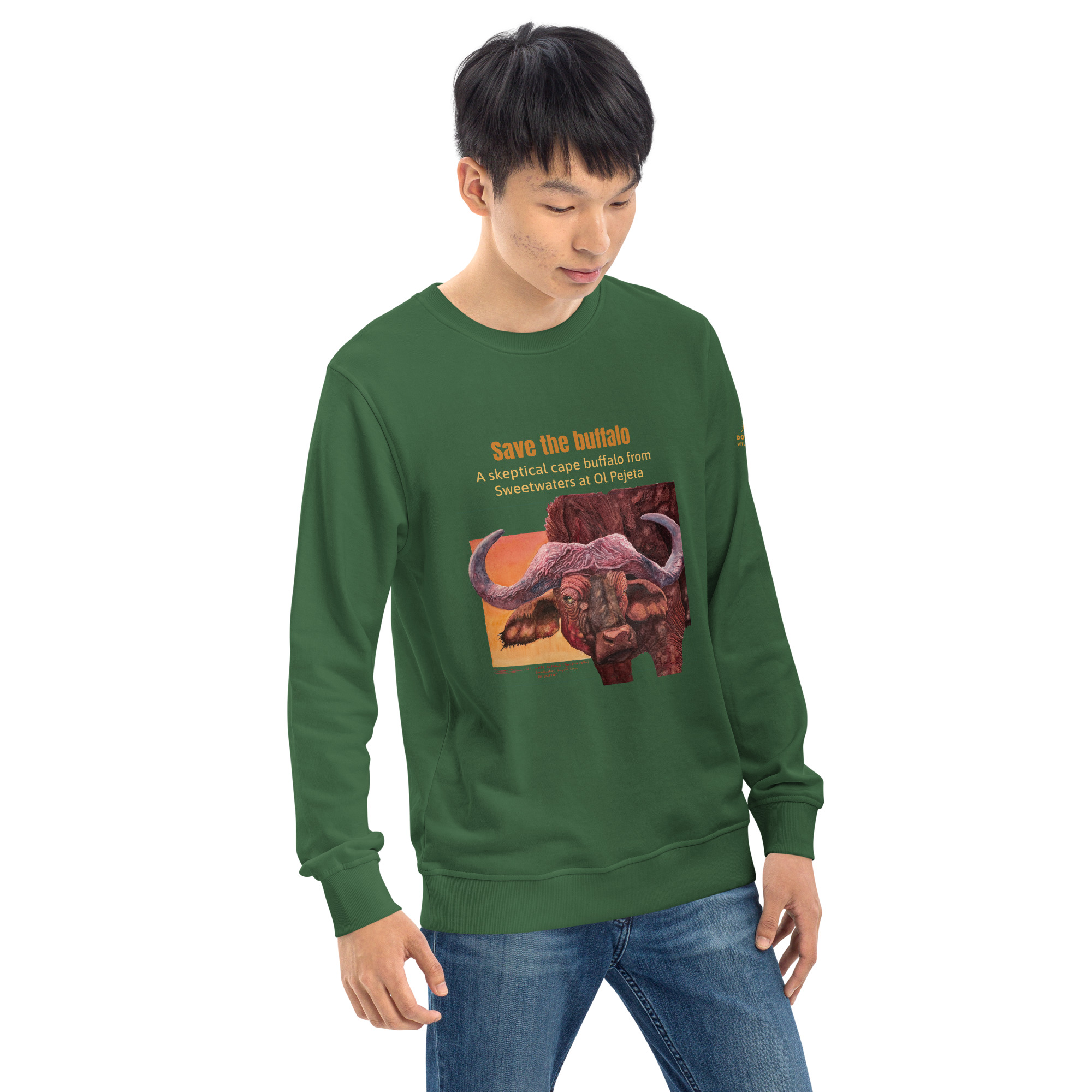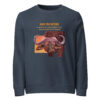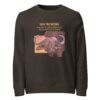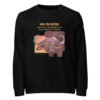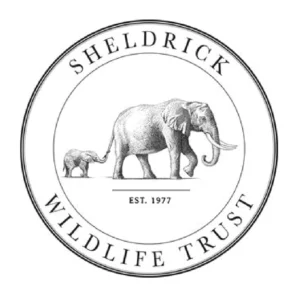25% of all proceeds from “Tim” art and merchandise goes directly to the Sheldrick Wildlife Trust, in Nairobi, Kenya, to support their orphan programme.
Unisex organic sweatshirt, save the buffalo
$51.00 – $53.00
Product Specs
Museum-quality archival paper:
The poster is printed on enhanced mat paper and the frames are made from lightweight wood from renewable forests.
• Ayous wood .75″ (1.9 cm) thick frame from renewable forests
• Paper thickness: 10.3 mil (0.26 mm)
• Paper weight: 189 g/m²
• Lightweight
• Acrylite front protector
• Hanging hardware included
• Blank product components in the US sourced from Japan and the US
• Blank product components in the EU sourced from Japan and Latvia
How to attach hooks on 24″ × 36″ horizontal frames:
Place each of the mounting hooks 1 inch (2.5 cm) from frame corners when hanging horizontally.
This product is made especially for you as soon as you place an order, which is why it takes us a bit longer to deliver it to you. Making products on demand instead of in bulk helps reduce overproduction, so thank you for making thoughtful purchasing decisions!
Age restrictions: For adults
EU Warranty: 2 years
In compliance with the General Product Safety Regulation (GPSR), Oak inc. and SINDEN VENTURES LIMITED ensure that all consumer products offered are safe and meet EU standards. For any product safety related inquiries or concerns, please contact our EU representative at gpsr@sindenventures.co
You can also write to us at 123 Main Street, Anytown, Country or Markou Evgenikou 11, Mesa Geitonia, 4002, Limassol, Cyprus.
About The Subject
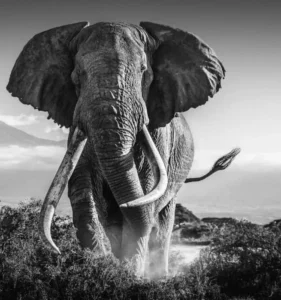 About Tim:
About Tim:
Tim was an African elephant, (Loxodonta Africana, and one of the few remaining giant tuskers, so-called because their tusks almost reach the ground. According to the Tsavo Trust, there are only around 20 giant tuskers left in the world today, as they are challenged by habitation compression, conflict with local farmers and poachers.
Big Tim was beloved by hundreds of thousands of people worldwide and was a major attraction at Amboseli, his home for 50 years. He was, according to Tsavo gamekeepers “intelligent, mischievous, and good-natured – a genuine gentle giant”.
Tim had survived attacks with spears by farmers during his frequent night raids on crops, was almost drowned in a mud pit, but was saved by Tsavo gamekeepers with help from the Sheldrick Wildlife Trust, and was constantly sought by poachers. Despite years of such near-misses, he died of natural causes in March 2020.
About Giant Tuskers:
According to the Tsavo Trust, there are only around 20 giant tuskers left in the world today. Giant tuskers, so called because their tusks can reach the ground, are challenged by habitation compression, conflict with local farmers and poachers.
In Kenya, the three most well-known giant tuskers have all recently died. Satao II was killed by poachers, probably with poisoned arrows, two years ago in Tsavo and the Elephant Queen (known as F-MU1 to scientists) died of natural causes earlier last year (also in Tsavo).
Conservation Status
IUCN Red list

The International Union for the Conservation of Nature (IUCN) Red List, a global standard for assessing the extinction risk of species, has updated the conservation status of African elephants.
There are two subspecies:
African Forest Elephant (Loxodonta cyclotis). This subspecies is now classified as Critically Endangered, meaning it faces an extremely high risk of extinction in the wild.
African Savanna Elephant (Loxodonta africana). This subspecies is listed as Endangered, indicating it faces a very high risk of extinction in the wild.
Threats:
The primary threats to African elephants include:
• Poaching: The illegal trade in ivory remains a significant driver of population decline.
• Habitat Loss: Deforestation and habitat degradation reduce the availability of food and shelter for elephants.
• Human-Elephant Conflict: As elephants encroach on human-occupied areas, they may cause damage to crops and property, leading to retaliatory killings by humans.
Conservation Efforts:
Various organizations and governments are working to protect African elephants through anti-poaching patrols, habitat restoration, and community-based conservation programs.
Population Numbers:
While estimates vary, approximately 415,000 African elephants are believed to remain in the wild.
My Conservation Commitment
My Conservation Commitment:
25% of all proceeds from “Tim” art and merchandise is donated to the Sheldrick Wildlife Trust, which focuses on African elephants, giraffes and rhinos, in Kenya.
Their innovative and effective conservation programmes include:
• anti-poaching units
• mobile veterinary units
• aerial surveillance units
• along with their globally recognized orphans’ project.
They are world renown for African elephant conservation, and hold the highest ratings possible for transparency from Charity Navigator and GuideStar.
About the Painting
Original watercolor
The original is a “pure” watercolor (no white pigment used) using Daniel Smith Finest Watercolor paints on Lanaquarelle 300 lb cold press rough watercolor paper from Legion. I used reference sketches for detail and a fabulous black and white reference photo by David Yarrow ,with his kind permission.
It took approx. 160 hours over two weeks.
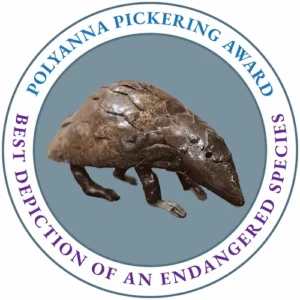
Award and accomplishments:
It won the Artists for Conservation Pollyanna Pickering Award for “Best Depiction of an Endangered Species”, in the juried exhibition of 2021.
It was one of 12 images selected for the AFC 2022 Calendar, and was included, along with another of my award winning pieces that year, in the 2021 Hardcover collectible exhibition book.


